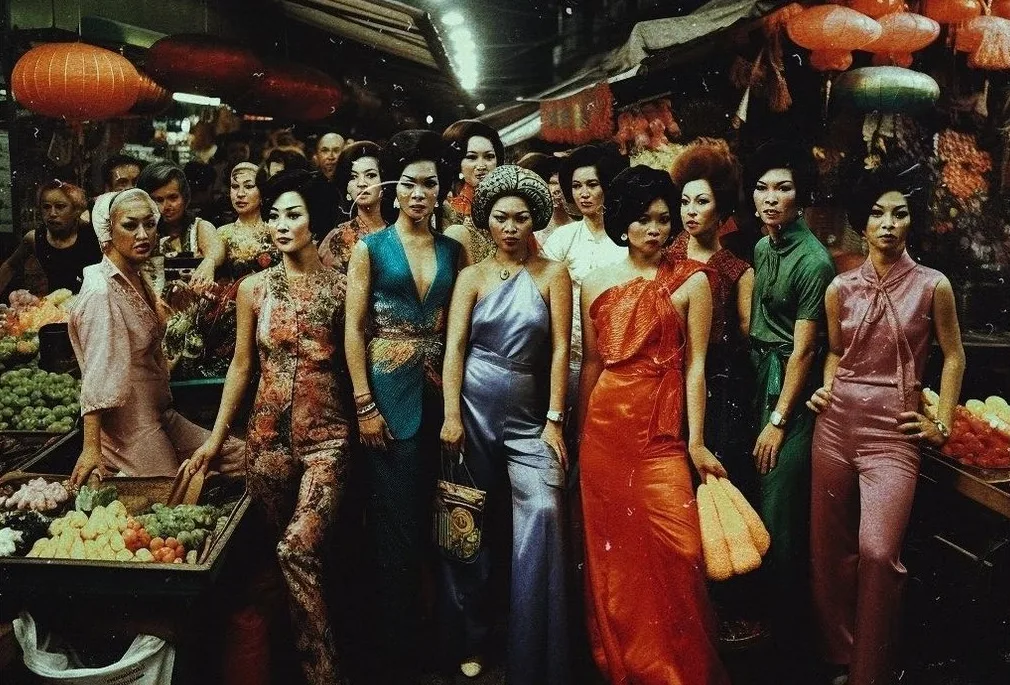

In 2021, photographer Rhiannon Adam was selected for the dearMoon mission, the first civilian flight to deep space. She immersed herself in the space industry for three years, grappling with everything from developing camera equipment that could function in low light and zero gravity to her own mortality. In 2024, the mission was abruptly cancelled, leaving the crew to pick up the pieces of their lives and reckon with their lost dreams. Adam tells writer Gem Fletcher how, as she got closer to the seemingly impossible reality of space travel, she uncovered a complex story about humanity’s relationship to space and its profound role in our cultural imagination.
In December 1968, astronaut Bill Anders and his Apollo 8 crew were the first to leave Earth’s orbit and travel to the Moon. During one of the mission’s lunar orbits, Anders took the now iconic “Earthrise” photograph, which famously led to his suggestion that NASA “should have sent poets” to capture the sense of wonder he experienced. In 2018, Japanese billionaire and art collector Yusaku Maezawa sought to fulfil Anders’ vision with dearMoon, a week-long lunar mission aboard SpaceX’s rocket, Starship, in which eight artists would join him to retrace Apollo 8’s journey and use their craft to reflect on humanity from space. Maezawa’s dream was that the artists’ work would inspire world peace, just as Earthrise had helped kickstart the environmental movement.

During the pandemic, Irish photographer Rhiannon Adam discovered an application for dearMoon. “It was the ultimate art residency,” she explains. “It answered my existential crisis about being a photographer in a deeply uncertain future. If you can’t travel the planet, leave it.” A few months later—after extensive medical testing to establish fitness for spaceflight—Maezawa selected Adam from over a million applicants as the only female crew member to join the mission.
Despite being selected, the crew had to keep their news confidential for a year before the mission was officially announced by dearMoon. “It was a very strange time,” recalls Adam, who became deeply attuned to the profound hold space has on our cultural imagination. “I started noticing that space was everywhere. I’d sit down on a plane, and someone would sit next to me in NASA pajamas. I’d see it on notebooks, clothing and ephemera. I’d originally thought an obsession with space was the preserve of fanatics and kids, but I quickly realized it’s everyone’s dream in some way to be a part of this. You hear it in the grandiose language people use to describe space and how we regard astronauts as otherworldly superheroes. We seem to be universally captivated by space as a symbol of freedom, majesty and possibility.”



Following the public announcement, everything changed for Adam. The crew were given exclusive access to the inner workings of the space industry, and dearMoon quickly took over every aspect of their lives. Adam made self-funded trips around the world to attend rocket launches and meetings with astronauts and even have lunch with Elon Musk, alongside endless media interviews, which forced her to reckon with the responsibility of suddenly being a public figure, as well as the possibility of not surviving the mission, and therefore her own mortality.
Simultaneously, Adam was focused on deep research for the project she hoped to make aboard Starship. She trawled space archives worldwide and spent months working closely with camera companies to develop equipment that could function in low light and zero gravity. “It was such an overwhelming opportunity,” explains Adam. “It’s something you can never repeat, and I wanted to make work that justified the mission.” This pressure was impossible to wear lightly, leaving Adam with one option: make the mission her sole purpose.

In 2024, dearMoon was abruptly cancelled, supposedly as a result of scheduling difficulties, leaving Adam and her fellow crew to pick up the pieces of their civilian lives and metabolize their lost dreams. After much mourning, Adam’s response was “Rhi-entry,” a multimedia project that traces her experience over the last three years while unraveling space travel’s complex role in our world. The project—named after rocket re-entry, often cited as the most dangerous part of spaceflight—blends staged and documentary photographs, archival material and ephemera, presenting a striking and emotional picture of space and its potent mythology.
The fantasy of space travel is a recurrent theme throughout “Rhi-entry,” not just in the raw and vulnerable retelling of Adam’s experience, but through the lives of ordinary citizens. In one image, we see multiple handwritten Interplanetary Tour Reservations from New York City’s Hayden Planetarium Archive, collected between 1950 and 1954. As a part of the exhibition “Conquest of Space,” visitors of all ages were invited to complete a tour reservation for a trip to the cosmos, and the museum received over 21,000 applications.


“Would you please send me two return trip tickets to the moon. I am interested in spending my honeymoon there. I would like first class accommodations on your fastest space ship,” wrote James Lawrie. “I love science. I want to be an astronomer when I am grown, and that isn’t long. I want to get out of this world of war, and soon I hope. Please let me know,” exclaimed 13-year-old Maurice Horne. “I, like many others, have always dreamed of a chance like this; it has always been my ambition to reach a planet…until I am in a rocket heading for the far-off space, I won’t be content,” exclaimed Barbara Gleason. The photograph shows space as a universal vessel for fantasy, one that, due to its inherent magic and mystery, projects our hopes and dreams back at us.

“I find it fascinating how we have all been so involved in the construction of the image of space, and over time it’s replaced the reality of it,” Adam says about the intentional blurring of fact and fiction in “Rhi-Entry.” “Art and science-fiction have reached this intersection where you almost wonder, was it the artist that came up with the strategy for space, and then the evil billionaire just read it as a playbook? Does the current commodification of space root back to some idle artist dreaming up the impossible?”
Adam continues, “Initially, when I was even thinking about what this journey means to me, I was thinking a lot about the space industry being entrenched in conspiracy theories, from flat earthers to people doubting if we ever went to the moon. I planned to make analogue work during the mission because I wanted to make sure the evidence of me going was irrefutable, especially in an era where it’s harder than ever to tell what’s real.”


“Rhi-Entry” is a shrine to lost dreams, despite Adam getting excruciatingly close to realizing them. While her experience feels more akin to a lucid dream than reality on many levels, her brush with the future has produced a powerful reflection on the contemporary space race and our role in cultivating this collective fantasy. “There is something deeply primal about our fantasy of space. To experience a place untouched by human presence,” Adam says as we end our conversation. “And yet, there will be a point where the gateway opens, and everyone can go to space, and no one finds it special or interesting anymore. We are at a strange point in history where we can still think about it as magical, and I’d like to preserve that.”



